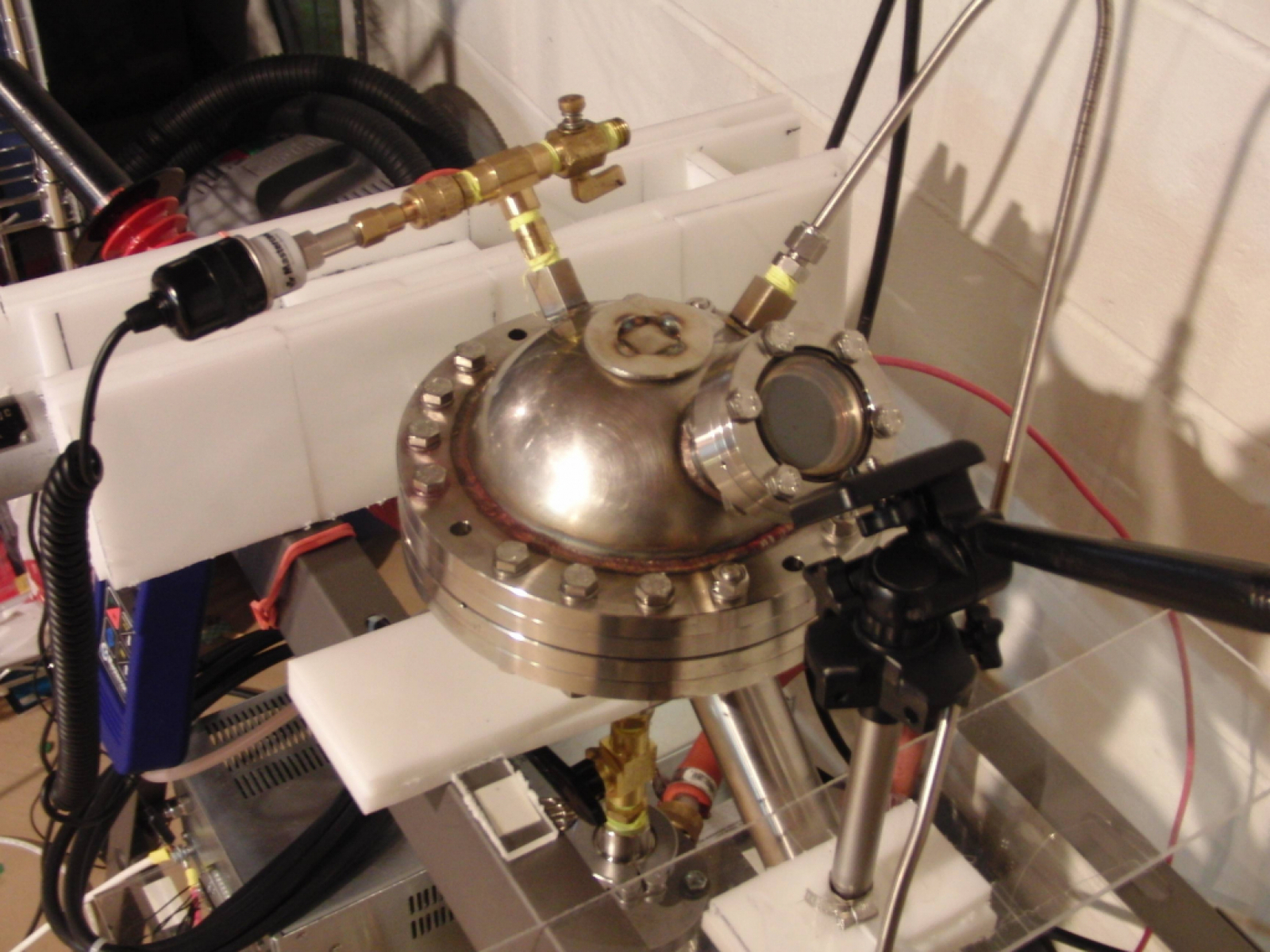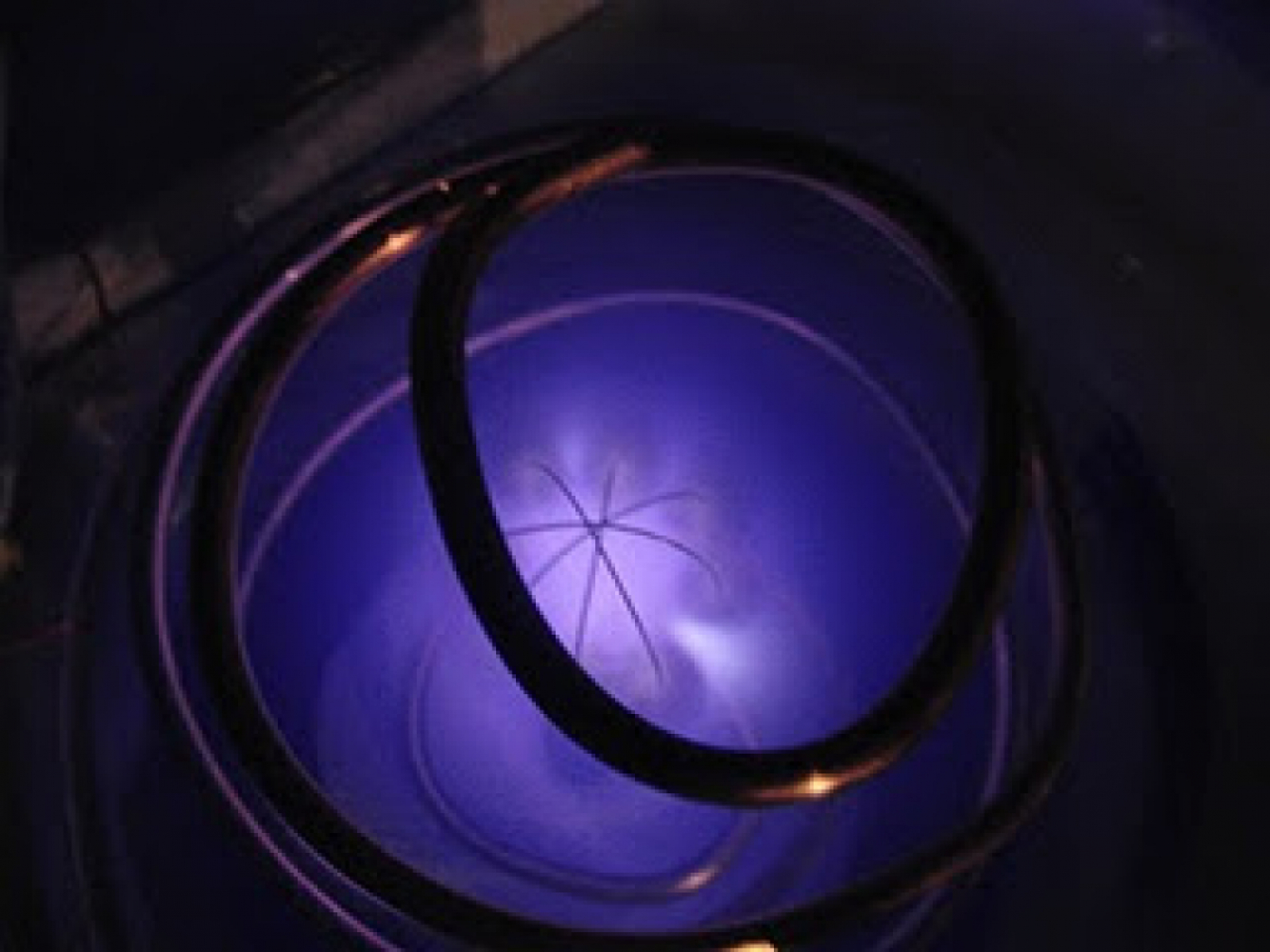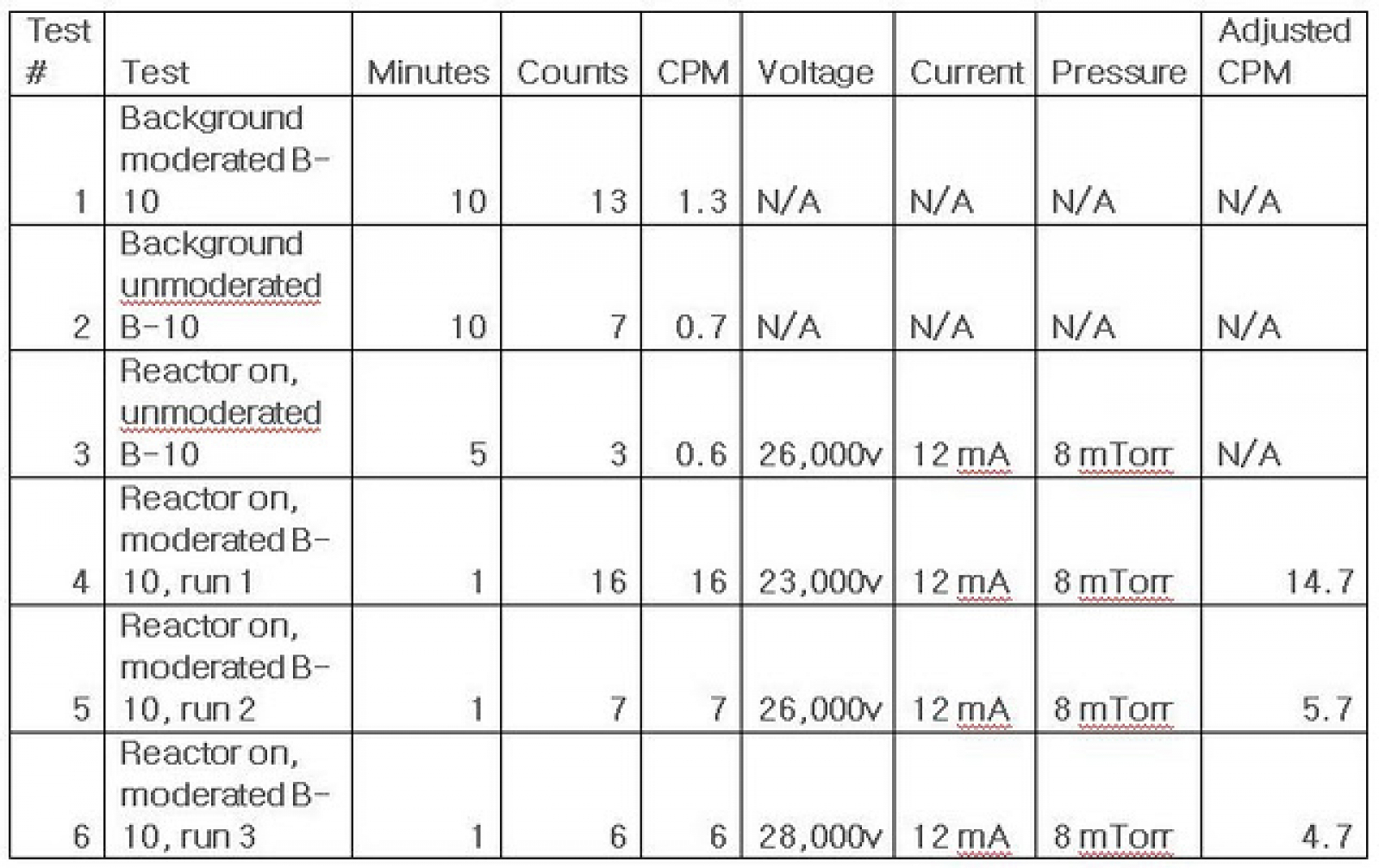IEC Fusion Reactor MK II
This page covers my Inertial Electrostatic Confinement Fusion Reactor MK II, which fuses ions of deuterium into helium-3 through inertial electrostatic confinement. In order to learn about how it works, visit the Basics of IEC Fusion page I have written. It feels nice to be writing again. Since my last update I have acquired a 75kV x-ray transformer from @adammunich, as well as all the parts to make my vacuum chamber. I also got a Veeco EP-2A air cooled diffusion pump. Inconveniently, both this pump and my HV feedthrough require custom flanges to be machined. The plans for my new chamber are to the left. In the plans, the HV feedthrough port is the lower left one, the diffusion pump port is the bottom middle one, and the long one on the bottom right is an ion gun based on a DC magnetron, which is not shown. The DC magnetron is unlike it's cousin, the cavity magnetron, which creates microwaves, whereas the DC magnetron helps ionize gas by setting electrons into a spiraling path. Inside the source, there will be a 6"x1/4" rod charged to 3-5 kV. The magnets will surround the source partially, or I will use a large electromagnet wound around the source.. The 30kV will be generated by a 15kV NST (floating center tap) run through a voltage doubler constructed of microwave oven capacitors and diodes. I have also decided that I will leak deuterium into the chamber through a 5 micron wide orifice on the ion gun. The deuterium will first be regulated down to 5 psi from tank pressure by a hydrogen regulator, and then it will pass through the 5 micron orifice and through a ball valve. To detect neutrons, I will be using a much cheaper approach than the normal bubble dosimeter or a He-3 or B-10 tube. I will be using a cloud chamber to view proton recoil from neutrons as they pass through a hydrogenous moderator. The chamber will be lead shielded, allowing only strong cosmic rays and neutrons to pass into it. There will be a piece of LDPE inside the chamber to allow for the proton recoil to occur.
It feels nice to be writing again. Since my last update I have acquired a 75kV x-ray transformer from @adammunich, as well as all the parts to make my vacuum chamber. I also got a Veeco EP-2A air cooled diffusion pump. Inconveniently, both this pump and my HV feedthrough require custom flanges to be machined. The plans for my new chamber are to the left. In the plans, the HV feedthrough port is the lower left one, the diffusion pump port is the bottom middle one, and the long one on the bottom right is an ion gun based on a DC magnetron, which is not shown. The DC magnetron is unlike it's cousin, the cavity magnetron, which creates microwaves, whereas the DC magnetron helps ionize gas by setting electrons into a spiraling path. Inside the source, there will be a 6"x1/4" rod charged to 3-5 kV. The magnets will surround the source partially, or I will use a large electromagnet wound around the source.. The 30kV will be generated by a 15kV NST (floating center tap) run through a voltage doubler constructed of microwave oven capacitors and diodes. I have also decided that I will leak deuterium into the chamber through a 5 micron wide orifice on the ion gun. The deuterium will first be regulated down to 5 psi from tank pressure by a hydrogen regulator, and then it will pass through the 5 micron orifice and through a ball valve. To detect neutrons, I will be using a much cheaper approach than the normal bubble dosimeter or a He-3 or B-10 tube. I will be using a cloud chamber to view proton recoil from neutrons as they pass through a hydrogenous moderator. The chamber will be lead shielded, allowing only strong cosmic rays and neutrons to pass into it. There will be a piece of LDPE inside the chamber to allow for the proton recoil to occur. Yup, it works. The next step after this is to move on to fusion by upping the input voltage and building a deuterium injection system. To find out more about how this type of reactor works go here: http://en.wikipedia.org/wiki/Fusor
Yup, it works. The next step after this is to move on to fusion by upping the input voltage and building a deuterium injection system. To find out more about how this type of reactor works go here: http://en.wikipedia.org/wiki/Fusor And, because of valentine's day, why not a heart shaped grid?
And, because of valentine's day, why not a heart shaped grid?


 Due to the lack of the increase between tests 2 (background, unmoderated) and 3 (reactor on, unmoderated), it can be known that the tube was not detecting x-rays or EMI from the fusor, and that any recorded count would be due to neutrons. The following three tests, (4-6, reactor on, moderated) show a large increase over background, indicating that the reactor was indeed producing a measurable neutron flux, and was indeed working! I entered the reactor, with this simple experiment into the science fair, and I won both the district and regional fairs, and because of this, I will be attending the Intel International Science and Engineering fair in LA!
Due to the lack of the increase between tests 2 (background, unmoderated) and 3 (reactor on, unmoderated), it can be known that the tube was not detecting x-rays or EMI from the fusor, and that any recorded count would be due to neutrons. The following three tests, (4-6, reactor on, moderated) show a large increase over background, indicating that the reactor was indeed producing a measurable neutron flux, and was indeed working! I entered the reactor, with this simple experiment into the science fair, and I won both the district and regional fairs, and because of this, I will be attending the Intel International Science and Engineering fair in LA!
Vacuum Chamber
The reactor's chamber consists of two 6″ stainless steel hemispheres, held together with 8″ conflat flanges. The chamber has four flanged ports; a high voltage feedthrough port, a viewport port, a diffusion pump port, and a port, not yet utilized, for an ion source. Additionally, there are two 1/4" NPT ports for gas inlet, and a vacuum gauge and atmospheric vent.
Fusion Reactor's First Light!
After about 1000 hours of work and research, halon fire extinguisher in hand, donning my lead jacket...I flipped the variac's power switch, turned its knob, turned the ground fault protection off, and frankly, much to my surprise, a brilliant glow of blue plasma appeared.
New Inner Grids
Here's a nice spiral torus shaped grid:

Star Mode Achieved
Finally, with a new grid based off of interlocking washers, I have achieved "star mode" from my fusor. This occurs when plasma jets, electron, and ion beams emanate from the plasma at many points inside the inner grid. The ground fault protection on my neon sign transformer fires rapidly (I desperately need a new NST) when operating in this mode, rendering it hard to get a good picture of this. My best effort is shown here.
Fusor Update and Science Fairs
Sorry I haven't written for a while, but the science fair and school have completely consumed my life. This is just a quick update on the fusor.I am currently upgrading my vacuum system and and adding in a diffusion pump, which is a type of high vacuum pump used in series with a mechanical pump, this pump should allow me to reach pressures of less than 1 millitorr. I am also going to build a 50kV/5mA power supply, which should allow me to do fusion. I am also building a 6", spherical stainless steel chamber, complete with conflat high vacuum flanges, a nice high voltage feedthrough, an ion source operating off the magnetron principle, and a nice viewport.Recently, I also entered my fusor in the science fair as part of a project titled "Effects of an Outer Grid on an Inertial Electrostatically Confined Fusion Reactor", and I received many awards!I received the following awards:Mars Society Grand Prize1st Place in Physics at the District Science FairDistrict Fair Grand PrizeSuperior Rating at DistrictsAkron Council of Engineering and Scientific Societies Grand PrizeBridgestone America Best Physics Project2nd in Physics at NEOSEFSuperior Rating at NEOSEFThe Office of Naval Research Naval Science AwardInternational Society of Automation Grand PrizeSuperior Rating and Perfect Score at Ohio State Science Fair (no prizes like 1st 2nd or 3rd were given out)I also received a perfect score at states, meaning my work will be published in the Ohio Academy of Science's Publication. And I will attend a Junior Academy of Science Conference in D.C.Fusion Achieved
Since I have last written, I have done much work on the reactor, including the addition of a new mounting system, based upon an old scroll saw stand, and the completion of the deuterium system. Also, the neutron detection system was completed. The new detection system utilizes a boron-10 lined proportional tube, which can detect thermal neutrons, however, the neutrons from the D+D -> He-3 + n reaction have very high energies, and therefore must have their energy reduced prior to entering the tube. Therefore, the tube is placed inside a HDPE neutron moderator, which reduces neutron energy through elastic collisions with protons inside the moderator. The tube is read by a Ludlum Model-3. I eventually fired the reactor up and did some trials with the gas system. My data indicates that the reactor does indeed work!
